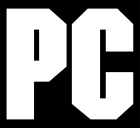| INFO | |
|---|---|
| Other names | RTCW: Operation Resurrection (PS2), RTCW: Tides of War (Xbox) |
| Developer(s) | Gray Matter Studios |
| Genre | FPS |
| Platform(s) |    |
| Release date | 2001-11-20 |
Those of you who were already PC gamers in January 2002 (probably none) will perhaps remember (probably not) the rivalry between this game and Medal of Honor: Allied Assault. Some even said it was the new Quake 3 vs. Unreal Tournament. It seemed as if you had to choose between one or the other.
Which was just bullshit, in my opinion. These games didn't really compete. There was no real "fight". I enjoyed both of them for what they were. MOHAA was a realistic WWII shooter that you could learn a little bit of historical trivia with. RTCW was a game with Nazi mutants and zombies. And it was a little bit better.

The preceding game, Wolfenstein 3D, had been released in 1992 and was credited with popularizing the trend of first-person shooters. It was a great legacy the one inherited by Gray Matter Studios. And they rose up to the challenge, with near-perfect execution I may add. In fact, this game could be used as a reference manual of how to get old glories up to date.
The first correct decision was to use an improved Quake 3 engine. With a little bit of new AI code, it proved to be a solid foundation for a narrative shooter. The lighting, the effects, the models and textures were top notch. Those German uniforms really did look fancy if you could afford to buy a decent GPU. The orchestral soundtrack, composed by Bill Brown, was also memorable. They even went a step further and added a multiplayer mode that was quite a hit. It was mostly about teamwork and with different player classes (soldier, medic, engineer...). Yes, the credit should really go to Team Fortress, but the truth is that this feature was well made and very entertaining.
The core of RTCW is pretty simple: undertake a campaign, divided in missions with several parts each, all tied by a common story. Get to the end of every level meeting your objectives, gunning down many people and creatures with your vast arsenal (the flamethrower is just awesome) and grabbing all necessary intel. Some levels have a few secret areas and treasure items scattered around.

Not everything reached perfection, of course. It's very linear. The plot felt like a silly excuse to grab a weapon and jump behind enemy lines to waste scores of Teutonic guys, even if the writers took the effort to write a bit of background story, exposed through long sequences of people talking, or documents spread across the levels. But when you keep hearing stuff about resurrecting a thousand-year-old dude with the combination of black magic and science fiction, you stop taking things seriously.
Some stealth mechanics have been implemented that allow you to silently "walk" (at a brisk pace) behind enemies and instantly kill them with the good, old neck-stabbing. Their comrades won't pay attention to them choking on blood, or their bodies and weapons falling to the floor. Well, the truth is that it's a welcome addition in a few maps where discretion isn't necessary, but there are a couple of missions where it's mandatory, and you already know what it means: that dreadful alarm sound playing over and over again until you learn the correct path and enemy patrolling patterns. Something in common with many other shooters of the early 2000s sadly; guess the engine wasn't really designed for that.

Increasing the difficulty won't give you additional objectives as it happened in GoldenEye 007. It only makes the enemies tougher and deal more damage, plus granting them robotic accuracy. The Kar98k-sporting snipers duel with the zapping Lopers for the title of Most Annoying Pest in this game.
Also, RTCW is too damn dark on average, as you've probably noticed by looking at the screenshots. Don't even bother playing it in a well-lit room: you'll strain your eyes trying to locate where you're being shot from. And there are many hidden doors and switches you won't be able to find either.

More bad things? Yeah. It's actually very addictive and I think I've played it almost as many times as Half-Life. In the end you forgive it for its few mistakes. It's like my guilty pleasure, only I don't feel guilty at all.
| Wolfenstein: Enemy Territory |
| Originally intended as a commercial expansion to the main game, problems during its development led to it being released for free in May 2003 as a standalone game, a gesture worthy of admiration. Basically a revamped RTCW multiplayer, its six maps, based on real war campaigns, offer multiple objectives to carry out (or prevent). New features include escorting vehicles and rank advancement, improving your character skills. The game was tremendously successful and it's still played today, with new missions and mods available. |
Playing
- Steam or GOG.
- To make it work on modern PCs, use iortcw. It implements the fixes of ioquake3 (which fixed Quake 3's source code) into the RTCW code base.
- The console ports shipped with a new prologue mission, Cursed Sands. As of today, there's no way of playing it on PC.
- Enemy Territory: on Steam, but it's available everywhere. It has its own version of iortcw, called ET: Legacy.



